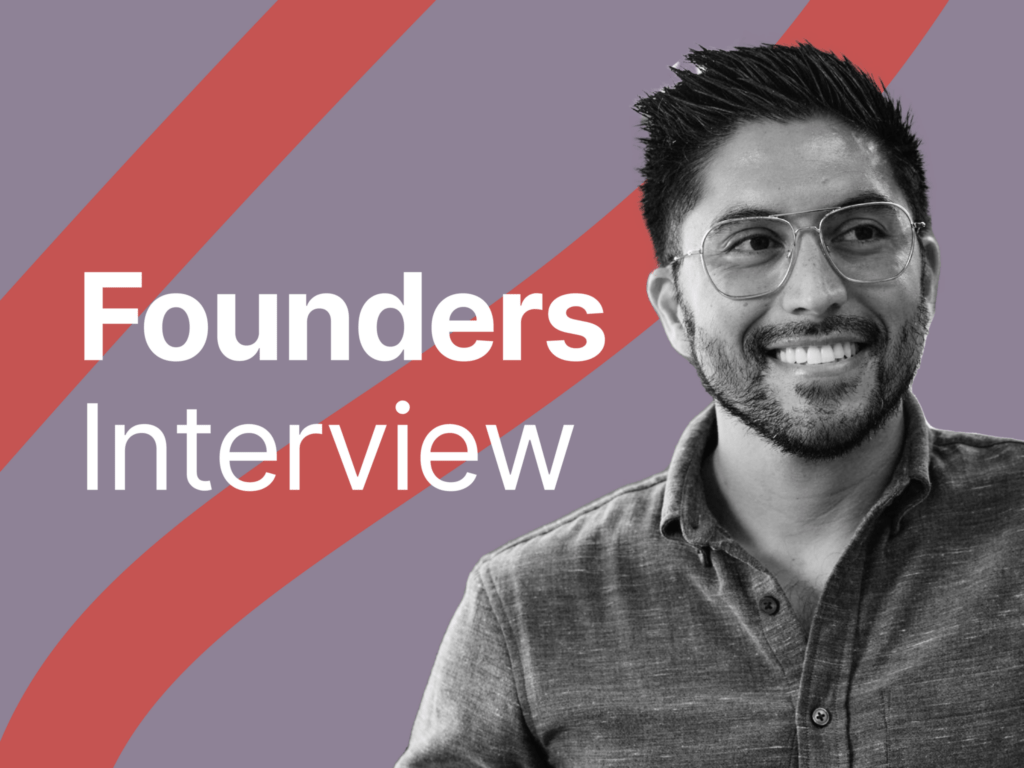A little bit about Eddie:
Eddie Simeón grew up in a multicultural family in Oakland, California. Throughout childhood, connecting to his roots meant cooking and eating foods from both his Mexican and Filipino heritage. So it made sense that he got his start at one of the Bay Areas trendiest fine dining establishments, À Côté; not in the kitchen, but behind the bar as a barback. It was there at the green age of eighteen that he was first introduced to the delightfully bubbly and bracing Bitters & Soda that he is best known for today. But before he launched Hella Cocktail Co. with his best pals in Brooklyn, NY, his career would take him on a full lap around the commercial media and entertainment space. MTV, Martha Stewart, ADWEEK are among the myriad of brands and websites he helped build as a Product Manager and PMP certified operations expert.
Today, he resides once again on the west coast, Los Angeles where he upholds his post as a founding partner of the craft cocktail company, Hella Cocktail Co. There, he heads up all things relating to Direct-to-Consumer (D2C), e-commerce, and underlying communication and supply chain systems. He believes that great brands define and own a clear space in which they plant their flag. Everyday, his goal is to remain curious and work to design that space at the intersection of consumer insights, company DNA, and categorical awareness, while utilizing the culture surrounding all of us.
This interview has been edited for brevity and clarity.
PART I
Trackmind: First of all, obviously, thank you so much for taking the time out to speak with me today. As we’re learning a lot more about the Sober Curious Movement and dry January and damp January, which is a word that I just discovered this year, which sounds a little creepy, but it makes sense, right? Dry and damp. I’m sorry, that just sounds really gross.
Eddie: Yeah, Maybe you can work on the word choice.
Trackmind: No, but it’s not me. That’s what everybody is calling it.
Eddie: We need to educate people. Yeah, no, but I understand the sentiment. Absolutely.
Trackmind: Yeah. It gets the point across. So, I’m super excited to speak with you about what Hella Cocktail is doing to provide a “buzz optional” beverage for people who don’t completely want to cut out alcohol but still want to reduce the amount that they take. Just to get started, can you tell me a little bit about yourself, and how long you’ve been in the food and beverage industry?
Eddie: Absolutely, yeah. Thank you for the opportunity to be on your platform. It was really great to get the invitation and to talk about this customer journey and this particular occasion. I’m one of the co-founders of Hella Cocktail Co. We started making premium cocktail ingredients as a hobby, gosh, in 2007. I can’t even do the math on how long ago that was, but it stayed a hobby for a number of years and then we decided to actually start selling cocktail bitters commercially in 2011. So, if you think back to what the cocktail scene and alcohol beverage in general looked like at that time, cocktails were new. They were being rediscovered. If you wanted to go get a craft cocktail, you had to go to a craft cocktail bar. Those were like speakeasy style clubs where they were very cool and there was a bouncer at the door and there’s a dress code.
Immediately, we knew that we didn’t, as fun as it was to visit some of those speakeasies of the early 2010s… I lived in New York at the time, so we would frequent Death and Co., Please Don’t Tell or PDT, Pouring Ribbons, some famous, famous cocktail bars. What we noticed was that people were continuously wanting to bring those experiences home and replicate the craft cocktail experience in their apartments and kitchens. What needed to happen in order for that to be a dream realized was to make the elitism and the mysticism behind craft cocktailing go away.
So, we wanted to create a cocktail brand that was approachable, fun-loving, celebratory above all, that allowed everybody to celebrate authentically in a way that was personal to them. And so, focusing in a very small way in cocktail bitters, which are also a small component of cocktails in general. You only use a little bit of bitters in any drink, compared to the amount of fruit juice or of course alcohol you would put in it. Back in those days, it was all about elevated craft. We’re all about upgrading your cocktail with a premium alternative to commercial low quality bitters.
Fast forward to today, the cocktail culture has grown so big that it even includes people who don’t drink alcohol at all. Think about what cocktailing means. At any restaurant who takes itself seriously is going to have a cocktail program. Everybody seems to have not only their favorite cocktails that they like to drink when they go out, many people have memorized their own favorite cocktail recipes and even follow trendy cocktail memes on social media, like Negroni Sbagliato or Espresso Martini. It’s just this part of culture now, but more importantly, a reflection of identity now. And so, we really love that component.
Of course, being people of color, we wanted to make sure that the brand itself was welcoming and flexible enough to reflect diverse identities. Not just the identity of people who like to wear suspenders and handlebar mustaches. But people who might want to use premium craft cocktailing experiences to celebrate Black History Month or Cinco de Mayo, or their version of Christmas that perhaps they celebrate in January and not December. Right? It’s such a diverse culinary component of the culinary world now.
As we marched along, trying to create a brand that was more welcoming, we of course inevitably rolled out more products. We don’t just have the bitters now, we have premium cocktail mixers that you add your own alcohol. We also recently launched Bitters & Soda, which is a sparkling non-alcoholic aperitif. To your point about dry versus damp January, the key insight for us around the customer need state was that people didn’t want to quit alcohol. They wanted the option to not drink alcohol when it best fits their needs. When it best fits their lifestyle. So, it’s that optionality that we are now all about. We’re about elevated choices across the spectrum of cocktail imbibing. We believe, and this is our mission, we believe if we offer elevated choices throughout the cocktail experience, that we will inspire people to celebrate more authentically, more confidently. So, it’s that inspired confidence that is the purpose of the brand, Hella Cocktail Co.
Trackmind: When I was reading your website, I came across that word, buzz optional, and that’s when I knew what you’re about. Even if your name says Hella Cocktail, I was like, okay, so is this a cocktail? Is it not a cocktail? Does it have alcohol? Does it not contain alcohol? Then I saw this. Because it was, I think, when I visited your website, the banner that was there on the homepage had the hashtag buzz optional. So, it was the first thing that I saw. I was like, okay, I absolutely love it. You can do a whole marketing campaign around it.
Eddie: Yeah, no, we have people.
Trackmind: Go ahead, go ahead.
Eddie: Oh, I was just saying, and we will do marketing campaigns around it. To reinforce this idea of optionality, I tend to refer to what’s happening right now in the beer industry. Beer is about a $100 billion industry. Huge category, right? One of the hottest topics in beer right now is non-alcoholic beer, because these brewers are actually making delicious beer. And it isn’t fake beer. It’s real beer. It’s brewed beer. It just doesn’t contain alcohol. And so, I have to give props to my friends at Athletic Brewing Company. I actually was, before watching the football game yesterday, I saw a Athletic Brewing Company TV ad, and I was blown away because it looks so big and commercial. And they’re doing an amazing job. But what I always return to that I learned from their founder, Bill, is 80% of Athletic Brewing Company customers drink alcoholic beer.
Trackmind: Along with drinking Athletic Brewing.
Eddie: Yeah. Yeah. So, they either cross shop it, so they’ll buy a six pack of Athletic and a six pack of Dogfish Head or whatever IPA, or they’ll switch. They don’t drink during the week, they only drink alcoholic beer on the weekends. That is really what customers are, the story that the numbers are telling is that people want the optionality to be flexible between their drinks on a basis of alcohol by volume. And so because we’re a mixer company, the customer is in complete control of how alcoholic their drinks are when they use our mixers. So, we have cocktail recipes that range from no alcohol to mid-alcohol, like light alcohol, and then full strength of course.
Trackmind: For sure. Yeah. That’s amazing. I love that. It’s the same when it comes to food as well. I am vegetarian. I grew up vegetarian, so that means vegan food doesn’t necessarily cater to me because it still has the taste of meat, but I don’t even want the option to have meat taste in my food. Sorry, actually, I don’t know. I think I just went way off on that one, but it’s similar.
Eddie: No, no. I’m hugely impressed that you tapped into that example, because that is what the non-alcoholic movement wants to be. We want to do a cultural shift from being labeled as sober, which would be equated to vegan, to being the equivalent to plant-based, which is basically non-meat based protein for meat eaters, right? So, I think that is what’s really important, is being a component of the alcohol experience with no alcohol.
Trackmind: So, what was the thought process behind expanding into your other two products? You have a wide range of flavors, which all look absolutely amazing, but what was the thought process? Did you check any industry trends that were happening? Did you look into consumer insights that made you decide to come up with the other two products?
Eddie: Yes, of course. So, when we started off in this category, again, it was very early days in the cocktail movement, in the cocktail culture. Our first national account wasn’t a grocery store or even a liquor store. It was West Elm, a home goods store where you go to buy furniture. They were merchandising our bitters along with all of the merchandise for your bar cart. Shakers, spoons, books, the bar cart itself. So, this was kind of like an object, kind of like an accessory for cocktailing as opposed to an ingredient for cocktailing. That’s more to the point that back in the day, people were trying to bring cocktails home.
What we identified right away, one of the fundamental challenges of this kind of product is that the serving size is very small. Plain and simple. This calls for less than a teaspoon of bitters per drink. We wanted to continue this narrative of welcoming authenticity into the celebration, but roll out products that had higher velocity. So, we started introducing products like margarita mix and Bloody Mary mix. Now, those items are still very high quality, but might be a monthly or even weekly use case for some customers who love to have a margarita with their friends or a Bloody Mary during brunch.
The Bitters & Soda, which is a sparkling beverage that comes in a can, it was always a dream to turn our bitters into a daily use product, into something that people consumed every single day. It took us a number of years to dial in on what the correct approach was. But luckily, what happened in conjunction with that, kind of in tandem with that, was customers started to seek out low and no alcohol beverage options more and more. And so we kind of jumped into the market right at the beginning of the perfect time. I actually think that it’s a category that’s still finding its way, especially on the merchandising and distribution side. Retailers are still figuring out what the correct way to shelf non-alcoholic beverages is. Where does it belong in the store? Is it a child to alcohol? Does it belong in the same part of the store as alcohol?
Back to the plant-based meat part, Beyond Burger and Impossible Burger, their big innovation was that they were able to put plant-based meats in the meat section. In the meat cabinet, next to the ground burger patties. And so, we’re still figuring out exactly where non-alcoholic beverages belong in stores. But Bitters & Soda, of course, we felt like we finally had our customer’s permission to launch a sparkling drink. What we didn’t know was if people would drink it straight by itself as a beverage or want to mix it with alcohol. We thought the key variable there, from a formulation standpoint, was sugar. How much sugar is it?
So, we launched two flavors of Bitters & Soda. The first one, and technically they had the same flavor, just one was full sugar and one was zero sugar. The Bittersweet Spritz is calorically on par with tonic water. It’s 90 calories per serving, it’s a full cane sugar beverage. Then the classic dry, there’s no sweetener whatsoever. It’s totally bone dry, it’s bracingly bitter. It has a very strong bitter taste. We find that that is very refreshing to a lot of people and also mixes quite well. So, we’ve come to find that in fact people do want to drink Bitters & Soda standalone, by itself, as an alternative to alcohol. That’s when we decided to roll out more flavors. Right, now on the shelves of Whole Foods nationally, we have the Bittersweet Spritz, the Classic Dry, and also Grapefruit.
Trackmind: Oh, that’s amazing. That’s amazing. So, it’s been quite, I wouldn’t call it an experimental journey, but it has been quite a risk. Would you call it a risk?
Eddie: It’s absolutely been a risk. Yeah. Launching your own business is very personal. It impacts everyone in your life. So, as partners, we’ve been together for 12 years, me and my business partners. I think there’s a couple ingredients, no pun intended, that resulted in us being able to survive for this long. The first was an aligned vision. We wanted to do something great that would leave an impact in cocktail culture permanently. We also had complimentary professional skills. We didn’t come to the table overlapping very much when it came to how to run the business, what our roles would be within the organization.
The third ingredient that I think has gotten us this far, to your point about risk, is being very disciplined financially. It took us a long time to raise capital. We only recently started bringing in equity partners into the business. For almost 10 years, we were running the business as a cash flow company. What that means is every quarter you need to have enough to pay yourselves. So, you need to be in the black or profitable enough to get to the next quarter.
A lot of companies will raise a lot of capital with a model that spends it down to zero in order to make it to the next fundraising round. But we’ve never been that way. We’ve always just been profitable or shooting for profitability every quarter. Low and behold, in a down economy like the one we are in or about to be in, that’s a very popular financial philosophy. So, very fiscally conservative, very fiscally rigorous is a very important part of how we’ve got this far.
PART II coming soon.
Enjoying our Feature Series so far? Check out other interviews and follow us on Instagram and LinkedIn to stay connected and see more stories of incredible business leaders like Eddie Simeón.



